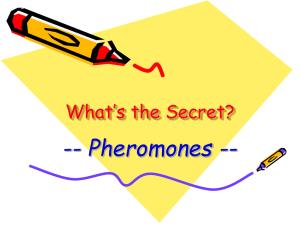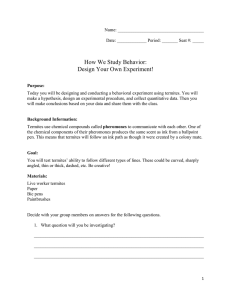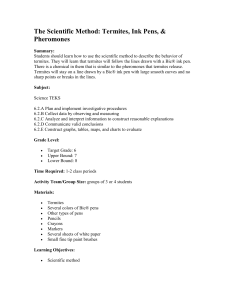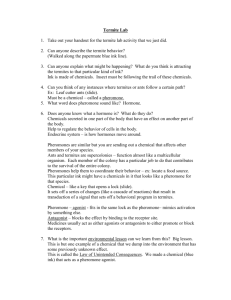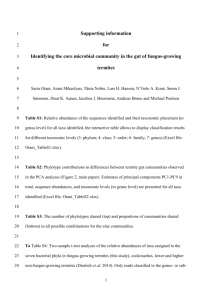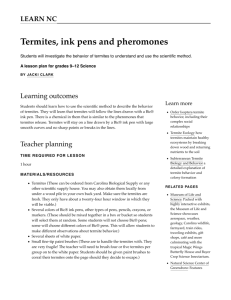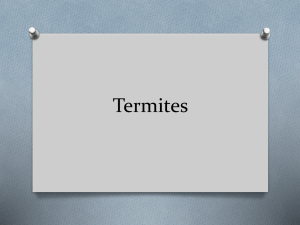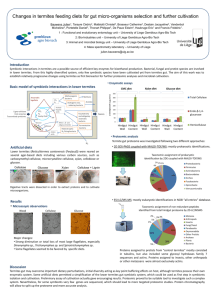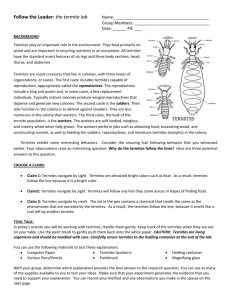Animal Behavior Lab - Madison County Schools
advertisement
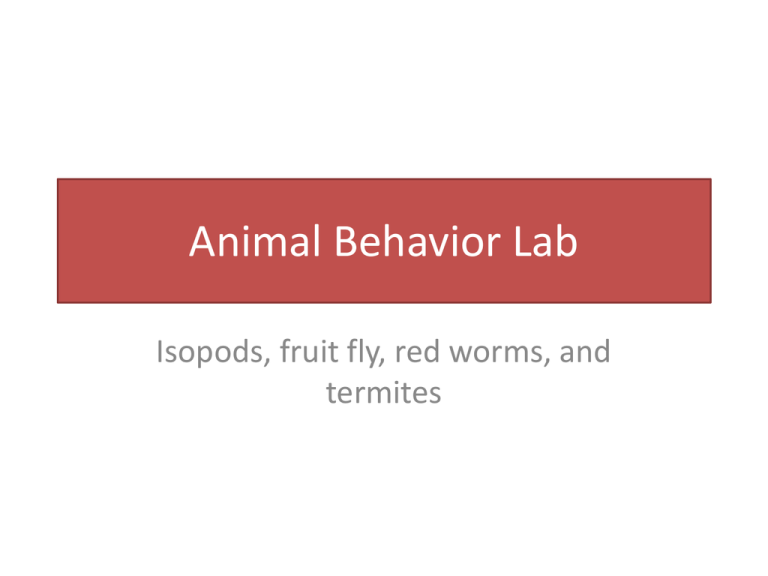
Animal Behavior Lab Isopods, fruit fly, red worms, and termites Review isopods • Behavior is an animal’s response to sensory input and falls into two basic categories— learned and innate (inherited) • Orientation behaviors place the animal in its most favorable environment. In taxis, the animal moves toward or away from a stimulus. Taxis is often exhibited when the stimulus is light, heat, moisture, sound, or chemicals. Review isopods • Kinesis is a movement that is random and does not result in orientation with respect to a stimulus. If an animal responds to bright light by random movements in all directions, it is called kinesis. • Isopods live in damp, often dark, environments where they eat plant and animal matter. They usually will exhibit taxis in these environments. Animal Behavior using termites • Many animals that communicate through odors emit chemical substances called Pheromones. • Pheromones are especially common among mammals and insects and often relate to reproductive behavior. • Pheromones can be very effective at remarkably low concentrations. termites • We will test pheromones using ink pens, they are said to have the same chemicals as the pheromones used in some insects. • Termites use pheromones for trails, alarms, aggregation, recruitment, mating, and other things. • Most of these, like the trail pheromones, last only a short time. Worker termites • We will work with worker termites. • Workers are totally white and about ¼ inch in length, and do not have mature wings. Part A • Materials: Petri dish, filter paper, ink pen, paint brush, stop watch. • Method/procedure: students should place 3 termites on the filter paper and observe and record their activity, asking questions such as, “Do the termites exhibit any pattern to their movement?” or “Do they go in any particular direction?” Method/procedure • After recording the termites’ activity, they should then begin to draw straight lines with the pens; one at a time, in the area where the termites are located on the paper. • They should record which color ink and type of pen (manufacturer) caused the greatest reaction and what type of reaction they observed. Part B • Students should brainstorm about other things they could test using the pens (pheromones) and list these below. Students will design an experiment and perform the experiment as part B. Students should have a controlled experiment use the guide on online classroom to help you organize your thoughts. • We will try part B on Thursday.
